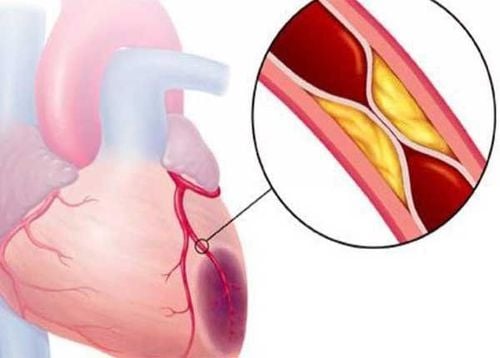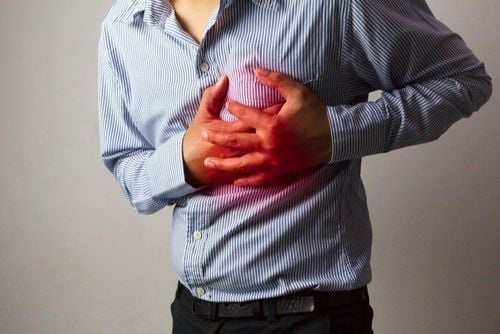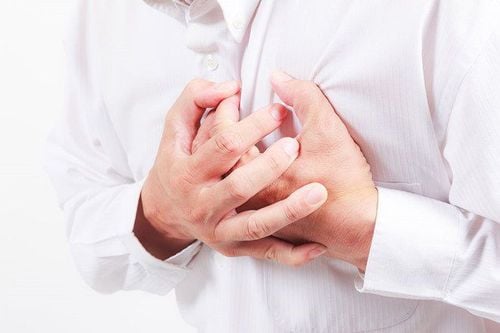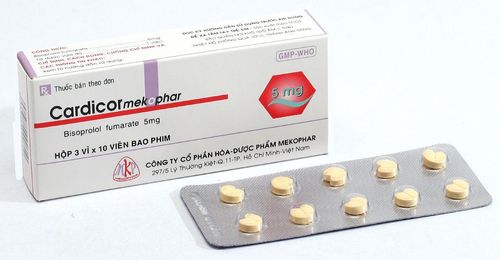This is an automatically translated article.
The article is professionally consulted by Master, Doctor Pham Van Hung - Department of Medical Examination & Internal Medicine - Vinmec Danang International Hospital
Coronary artery disease is one of the most common cardiovascular diseases and the leading cause of death worldwide. Therefore, early recognition of coronary heart disease for prevention and timely treatment when infected is essential to limit possible bad complications. This article will help you take all the necessary steps to detect coronary artery disease.
1. What is coronary heart disease?
The heart is the organ responsible for pumping blood throughout the body and nourishing the organs. However, the heart also needs a system of blood vessels to feed itself, known as the coronary arteries.Coronary artery disease is a condition in which the inner lining of the coronary arteries is damaged. The main cause is due to the accumulation of plaque on the walls of blood vessels (atherosclerosis), more plaque will cause narrowing of the artery, preventing the heart from receiving enough blood. This is myocardial ischemia.
Many patients with coronary heart disease do not know their condition, because the disease develops quite slowly and silently over many years. Most of the disease goes unnoticed until the first attacks of angina or the appearance of a life-threatening myocardial infarction.
2. Signs of coronary heart disease
Coronary artery disease can cause patients to experience symptoms such as: angina due to reduced blood flow to the heart, shortness of breath... More dangerous, if one or more coronary artery branches are completely blocked (due to aortic aneurysm). Atherosclerotic plaque or blood clots that form inside the blood vessels) will cause myocardial infarction, which can lead to heart failure, cardiogenic shock, cardiac arrhythmias, and even death.The typical warning symptom of coronary heart disease is angina pectoris. Angina is described as a sharp pain in the form of burning, tightening, pins and needles, the heart is compressed, suffocated, feels heavy in the chest, difficult to breathe, usually occurs when the patient is exerted, when emotional, Anger... Location of pain behind the breastbone, in the middle of the heart, left chest pain often spreads to the left shoulder, arm and left hand, sometimes it can also be accompanied by vomiting, sweating. , short and weak breathing, fatigue, dizziness,...
3. Who should be examined for coronary artery disease?

Tầm soát bệnh mạch vành
According to the American Heart Association (AHA), tests to screen for coronary heart disease should begin at age 20, the frequency of which depends on the patient's risk factors. People with a history of chronic diseases such as: hypertension, diabetes, dyslipidemia...; longtime smokers; fat; Having an immediate family member (parent, sibling) with coronary heart disease is also considered a risk factor for the disease. In particular, the elderly should perform screening for coronary heart disease early due to age factors.
4. What to do to identify coronary artery disease
Cardiovascular examination at the Department of Cardiology. Total peripheral blood cell analysis (by laser counter) to determine the following parameters: determination of blood group ABO, Rh (D); quantification of Glucose, Cholesterol, Triglyceride, HDL-C, LDL - C, Creatinine, Urea, Total Calcium, Uric Acid, CRP hs, proBNP, FT4, TSH; measure activity AST (GOT), ALT (GPT); Electrolytes (Na, K, Cl): preliminary assessment of the status of chronic or acute diseases (hyperlipidemia, renal failure, infection, thyroid function, diabetes mellitus, function) liver, gout...) Urinalysis (by automatic machine) Measurement of CK (Creatine kinase) activity: determination of kidney function Quantification of Troponin T: rapid assessment of myocardial infarction. General abdominal ultrasound. Electrocardiogram Echocardiogram, transthoracic pericardium, Carotid artery Doppler ultrasound, Transcranial Doppler (in the carotid artery) Perform electrocardiographic exercise stress test Straight chest X-ray Selective coronary angiography with Contrast (coronary angiogram): this is the gold standard for diagnosing coronary artery disease. However, not all cases require coronary angiography. Usually, doctors will begin screening for coronary heart disease by assessing risk factors (comorbidities, age, family history, lifestyle...). Stress tests or coronary angiography are often for those at high risk for coronary artery disease. Note: when performing diagnostic tests for coronary heart disease, you need to fast, you can drink water but not coffee, soft drinks or smoking.5. Why should you check for coronary artery disease at Vinmec?
The coronary examination package at Vinmec International General Hospital is designed to include a full range of tests and procedures to accurately identify coronary heart disease h.Vinmec currently has a team of medical - doctors who are leading cardiologists, always dedicated and wholehearted to patients, with high professional qualifications, with 90% having university degrees and 20% having education. Professor, Assoc., 30% are doctorates, will bring accurate diagnosis in medical examination and treatment.
Comprehensive, professional medical examination, consultation and treatment service, with appointment booking to help you be more proactive in checking the health of yourself and your family. The system of modern testing equipment, appraised from abroad, gives very high accuracy results, supporting effective diagnosis and treatment. The medical examination and treatment space at Vinmec is modern, civilized, luxurious and ensures maximum sterilization.














